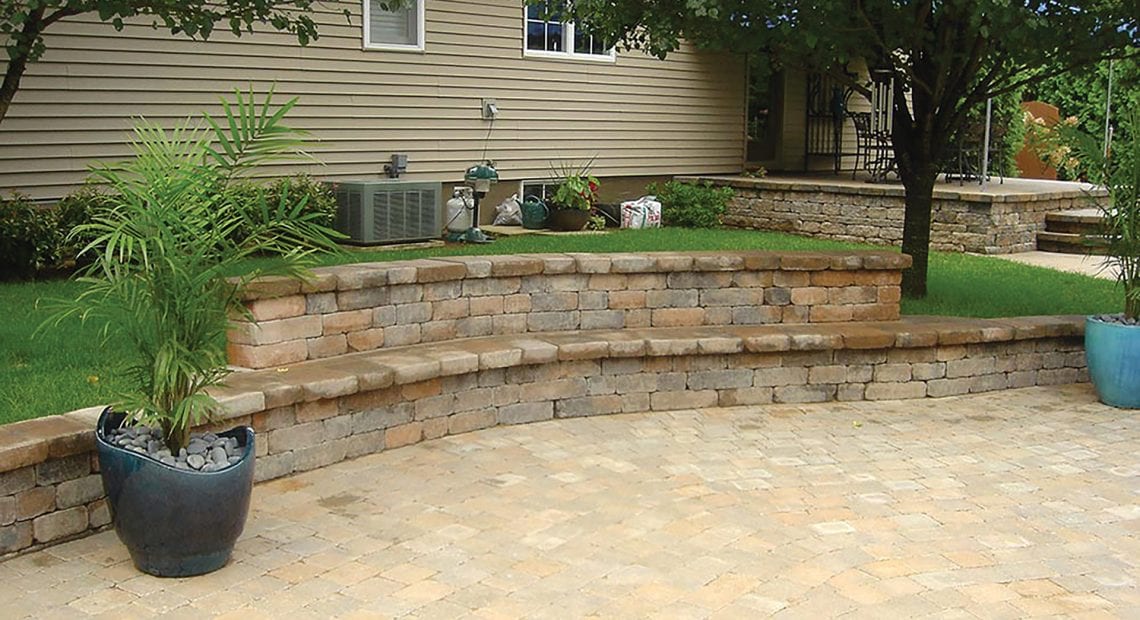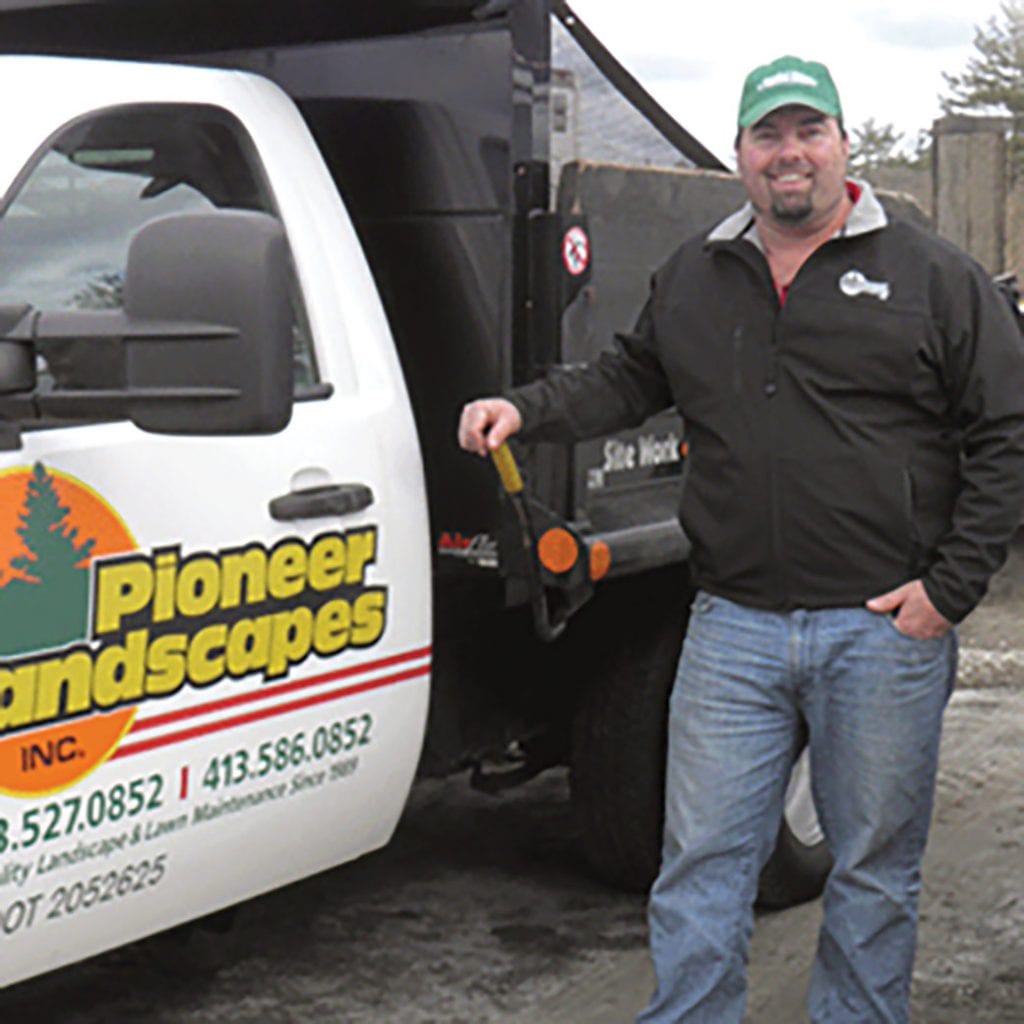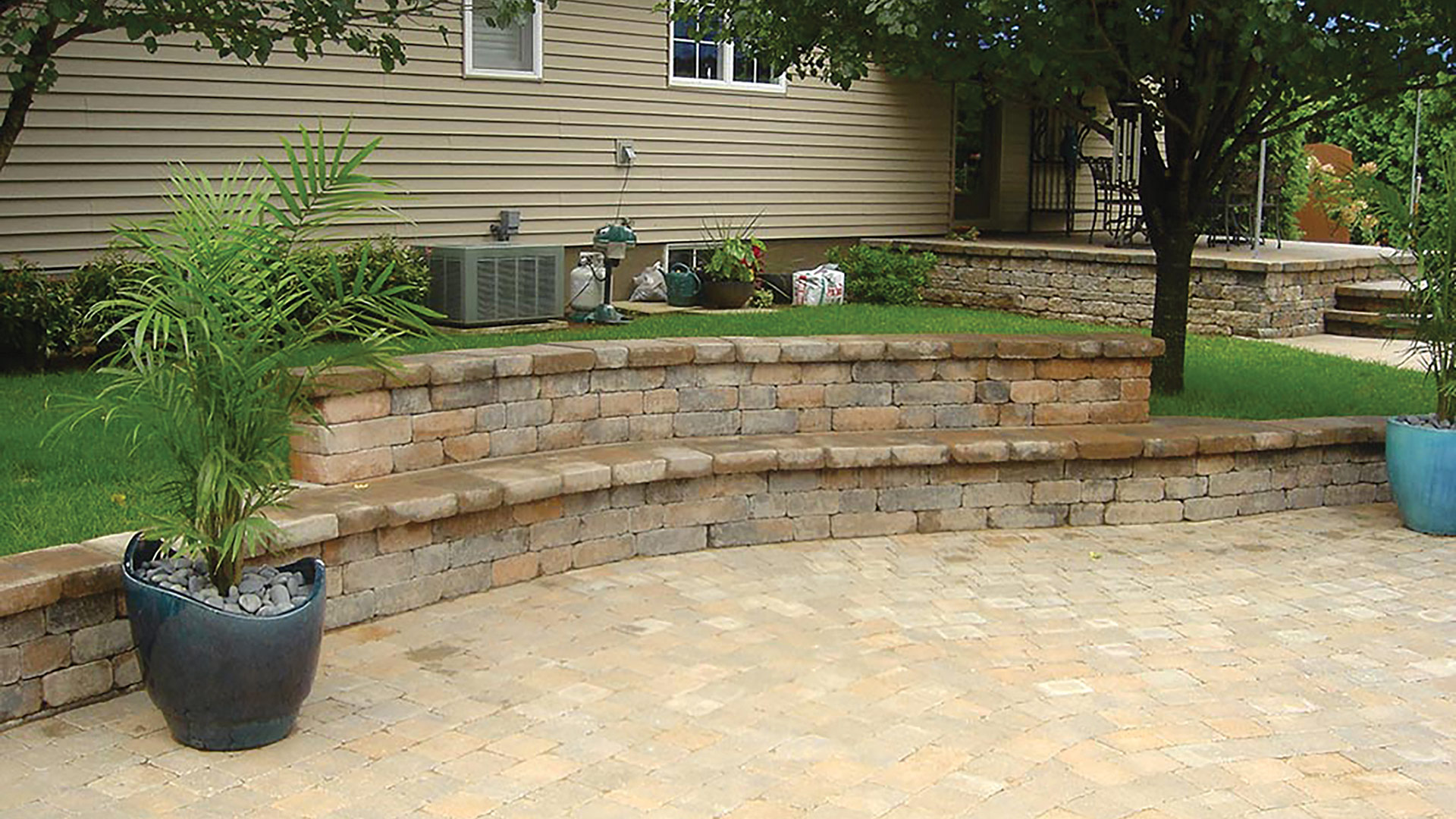
Landscapers Say Homeowners Are Focused on Lawns, Yard Projects
The Grass Is Greener
By Mark Morris

Brian Campedelli says the pandemic has definitely contributed to a spike in landscaping business.
On his daily commute from Wilbraham to East Longmeadow, Dave Graziano has never seen lawns as green as they are this year — even with the recent lack of rain. And as project manager for the landscape division of Graziano Gardens, he knows a thing or two about green lawns.
“More than ever, people are working on their homes and their yards,” Graziano said. “Because they’ve been stuck at home for the last few months, they’re way ahead in their yardwork projects.”
BusinessWest spoke with several area landscape contractors who say their residential business is booming this year. With people spending so much time at home, yard projects — both large and small — that were delayed in the past are now getting done.
“There’s definitely a correlation between COVID-19 and a spike in our business,” said Brian Campedelli, president of Pioneer Landscaping. “People are stuck at home and want to enhance their lifestyle, so they are improving their yards.”
For some homeowners, the scale of yard projects has gone far beyond replacing some shrubs or reseeding a lawn. Contractors are finding most of their business has shifted to hardscape projects, such as stone patios, stairways, and outdoor kitchens. Projects like these can cost around $20,000, with larger and more elaborate designs exceeding $100,000. For one project, Campedelli and his crew are working on a “massive patio” with an overhang attached to the house to shelter a bar underneath.
“We’re installing a TV with surround-sound speakers, as well as a firepit so they can chill out next to their pool.”
Where patios already exist, Campedelli said some homeowners want to rip out the existing structures and start fresh with new construction, while others enhance what they have by adding a firepit or accent lighting.
According to Gary Courchesne, president of G & H Landscaping, accent lighting has been in high demand in recent years. Also known as low-voltage accent lighting, it’s the subtle lighting that can enhance a home’s aesthetics, safety. and security.
“Because they’ve been stuck at home for the last few months, they’re way ahead in their yardwork projects.”
“As important as the safety and security features are, about 90% of the time, people choose accent lighting for aesthetic reasons,” Courchesne explained.
Improvements like lighting help owners to better enjoy their property now, while boosting curb appeal if they ever want to sell. Real-estate website Homes.com estimates that, when homeowners install accent lighting, they can recoup about 50% of their investment to the eventual resale value of the home. The return on investment for patios and decks can range from 30% to 73%.
No matter what project homeowners choose, they all have the same objective: low maintenance. Courchesne said some of his customers have asked for “no-maintenance” shrubs. While those don’t exist, he and his crew design layouts with reduced maintenance in mind.
“For example, instead of filling around the shrubs with mulch, which needs replacing every year, we’ll use stones,” he said. “People are definitely leaning toward designs that look nice and are easy to maintain.”
Graziano echoed that point, noting that, when he replaces old shrubs with new ones, his customers want landscapes that are easy to care for and do not require lots of maintenance. “Everyone has busy lives, and they don’t want to be burdened with spending too much time on yard care,” he said.
For many years, sprinkler systems have been an effective way to maintain lawns with minimal effort and continue to be popular this year, especially newer, more efficient models.
“People who did not have sprinkler systems are getting them installed,” Courchesne said, “and those who own systems but haven’t run them much are using them more this year.”
Growing Revenues
While landscape companies are busy with plenty of projects, it’s not exactly business as usual.
Each day starts with making sure workers have the proper face masks and other personal protective equipment they’ll need for that day. In the past, a crew might ride together to a job, but state guidelines now mandate one person per vehicle, and shared equipment must be disinfected in between users. Contractors have adjusted to all these extra steps because they are grateful to be considered an essential business.
That essential status wasn’t a given at first, though. Back in March, when Gov. Charlie Baker released the first round of essential industries that could remain open during the COVID-19 pandemic, the landscape industry was not explicitly listed. The guidelines allowed for some interpretation that would include them, such as support of essential construction projects.

Gary Courchesne says accent lighting is becoming more popular
So a coalition of landscapers, golf-course superintendents, and related professionals formed the Green Industry Alliance of Massachusetts (GIA) and appealed to the governor to specifically identify landscaping as an essential industry. The group’s argument centered around the short time window that spring presents for fertilizing, as well as controlling mosquitos, ticks, and other invasive species. The GIA also noted that many homeowners who are physically unable to take on lawn care depend on outside companies to maintain their property.
Shortly after the appeal, the governor declared landscapers essential providing they follow CDC guidelines.
Courchesne said the initial confusion of whether or not they could start their season resulted in some starts and stops in the beginning, but his company is now up to full speed and adjusting to the new protocols.
“Normally, we start the day with our full staff gathered around a conference table,” he said. “Now, we’re meeting in smaller groups out in our yard, so even if there was an infection, it’s not spreading to everyone.”
In early March, before the governor had ruled on landscapers’ status, Greg Omasta, president of Omasta Landscaping, temporarily closed his business over concerns about the spread of coronavirus.
“We closed for three weeks to make sure all our people were healthy,” he said, noting that this decision put his business behind in some of its early spring projects. “We’re scrambling now to get bark mulching done and plant seasonal flowers and such.”
Campedelli said his company also lost some work early in the spring due to delays caused by COVID-19, but he understands the changing nature of the virus and the guidelines. “We stay current on the latest requirements regarding COVID-19, and we make sure to share those with our workers as they happen.”

A few landscapers say hardscape projects are surging.
Since the go-ahead in March, Campedelli said his company is so busy, he would hire 10 more people if he could. Having enough workers is also a constant challenge for Omasta, who has 30 workers on staff but would like to add six or eight more.
Several contractors said one particular challenge in finding workers this year involves the Pandemic Unemployment Assistance program, which allows unemployed workers to collect an additional $600 per week through late July. While they all agree the program has merits and is important to help those who are struggling, they also point out that the additional $600 a week keeps some people on the sidelines who would otherwise be working.
Sometimes, filling open jobs is difficult because of the nature of the work. Graziano said the industry has been the same for more than 50 years, and it’s not for everyone. “Either you like to put a shovel in the ground, move mulch around and install pavers, or you don’t,” he told BusinessWest.
A typical landscaping season can run nine months, with three winter months dedicated to snow plowing. As Omasta pointed out, the length of the season is always tied to weather, which determines how early they start in the spring and how late they can work in the fall.
Even when the season is in full swing, rain is a constant variable to consider, Courchesne added. “There was one week in May when, out of six work days, it rained four of them.”
Home Games
When the rain clears, people are looking to get outside, but they’re not ready to stray too far. Until there is more certainty about the coronavirus, many are choosing not to go away on vacation.
Because of this uncertainty, Omasta said, his customers have made the decision to stay put rather than spending a week at the Cape.
“They’re telling me they want to stay home and work on some improvement projects so they can enjoy their backyard this summer,” he noted.
It’s not unusual for homeowners to want a big improvement project and then procrastinate on making the final decision. Courchesne said this year seems different.
“I’m seeing people with less hesitation than normal in their purchasing attitude,” he noted. “They’re saying, ‘we’re home, so let’s do this.’”
Because more people are home, even working from there, he added, they are realizing their home is not such a bad place — and they want to make it even better.
And that has made this a different kind of year for this industry.




